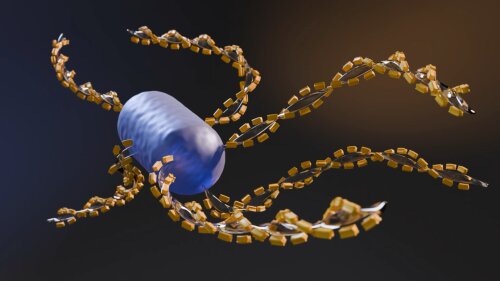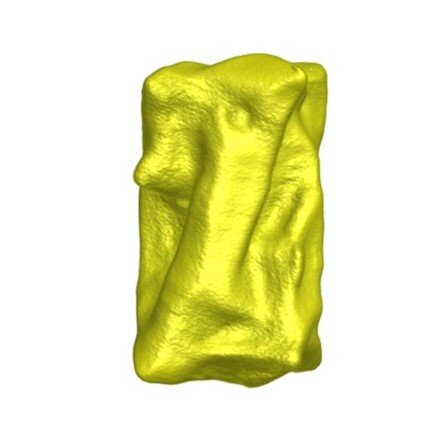Sara Bals receives 10 million euros for innovative research into gold nanoscrews
The European Research Council (ERC) has awarded a Synergy Grant of 10 million euros to physicist Sara Bals of the University of Antwerp and chemists Luis Liz-Marzán (CIC biomaGUNE, San Sebastian) and Nicholas Kotov (University of Michigan). The team intends to use artificial intelligence to link gold nanoparticles to proteins, resulting in numerous innovative applications.
The title of the project is ChiralPro. An object is “chiral” if it’s not identical to its mirror image, much the same as your right hand is different from your left hand. Screws are also good examples of chiral objects. Chirality plays an important role in biology and medicine: proteins in our body consist of chiral molecules, and in medicines often only one of the chiral forms of a particular molecule has the desired effect, while the other form has no effect or can sometimes even be harmful.
Scientists recently succeeded in making non-biological “nanoscrews” from gold atoms, about a hundred thousand times smaller than the screws we see around us every day. If they have the right shape, these chiral nanoscrews can bind strongly to chiral proteins, similar to how a key fits into a lock.
Fight against hospital bacteria
A remarkable application of these nanoscrews is the elimination of bacterial microfilms. Biofilms are responsible for dental plaque, but can also form a protective layer around hospital bacteria, making these difficult to combat with antibiotics. By linking the nanoscrews to the chiral proteins in the biofilm and then lighting them up, the individual screws heat up strongly, which can help destroy the biofilm including bacteria. In addition to their medical use, the screws can also be stacked like Lego blocks to create larger materials with new characteristics. These kinds of materials can be used for faster communication, such as in 6G.

The nanoscrews, examined using powerful electron microscopes, can be used to destroy biofilms and bacteria.
Researchers at the University of Antwerp will spend six years studying the nanoscrews with powerful electron microscopes. ‘Knowing whether a screw turns clockwise or counterclockwise is crucial to understanding its interaction with chiral proteins and light,’ says Professor Sara Bals, affiliated to UAntwerp’s EMAT research group. EMAT is a global leader in electron microscopy and has the most powerful microscopes in the world. Based on the images taken with these microscopes, Professor Nicholas Kotov (Michigan) can use artificial intelligence to predict the optimal shape of the nanoscrews to achieve strong binding with proteins. Those nanoscrews will then be produced in San Sebastian by Professor Luis Liz-Marzán and his team.

Gold nanoscrew, as seen through an electron microscope.
It’s the fourth time that Professor Sara Bals has acquired a prestigious ERC grant. This project is all the more special because the ERC Synergy Grants are the largest and most competitive grants awarded by the ERC. Synergy Grants are intended for outstanding research projects in which top scientists from different disciplines work together in an interdisciplinary manner to achieve breakthroughs that would not be possible in individual projects. After Ivan Janssens and Annemie Bogaerts, Sara Bals is already the third professor at the University of Antwerp to acquire an ERC Synergy Grant. Maarten Weyn, Vice-Rector of Research and Impact at UAntwerp, is very pleased with the awarding of the grant: ‘This latest Synergy Grant confirms UAntwerp’s extraordinarily strong position when it comes to interdisciplinary research with impact for people and society.’